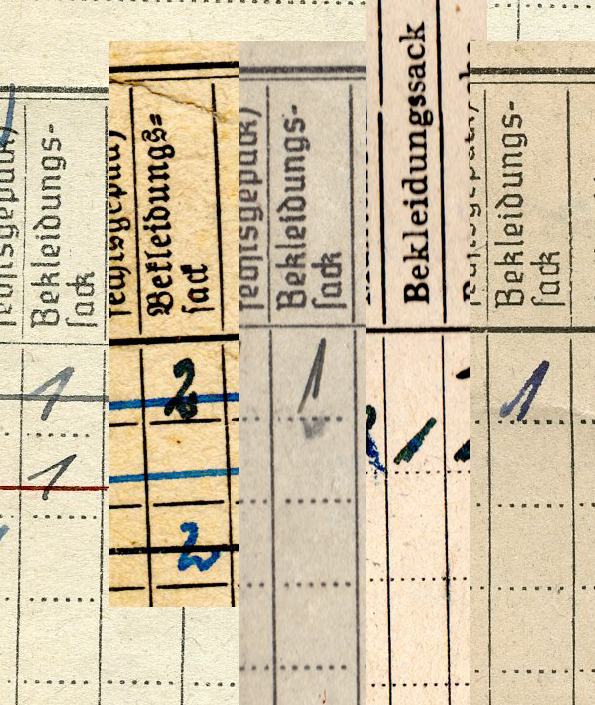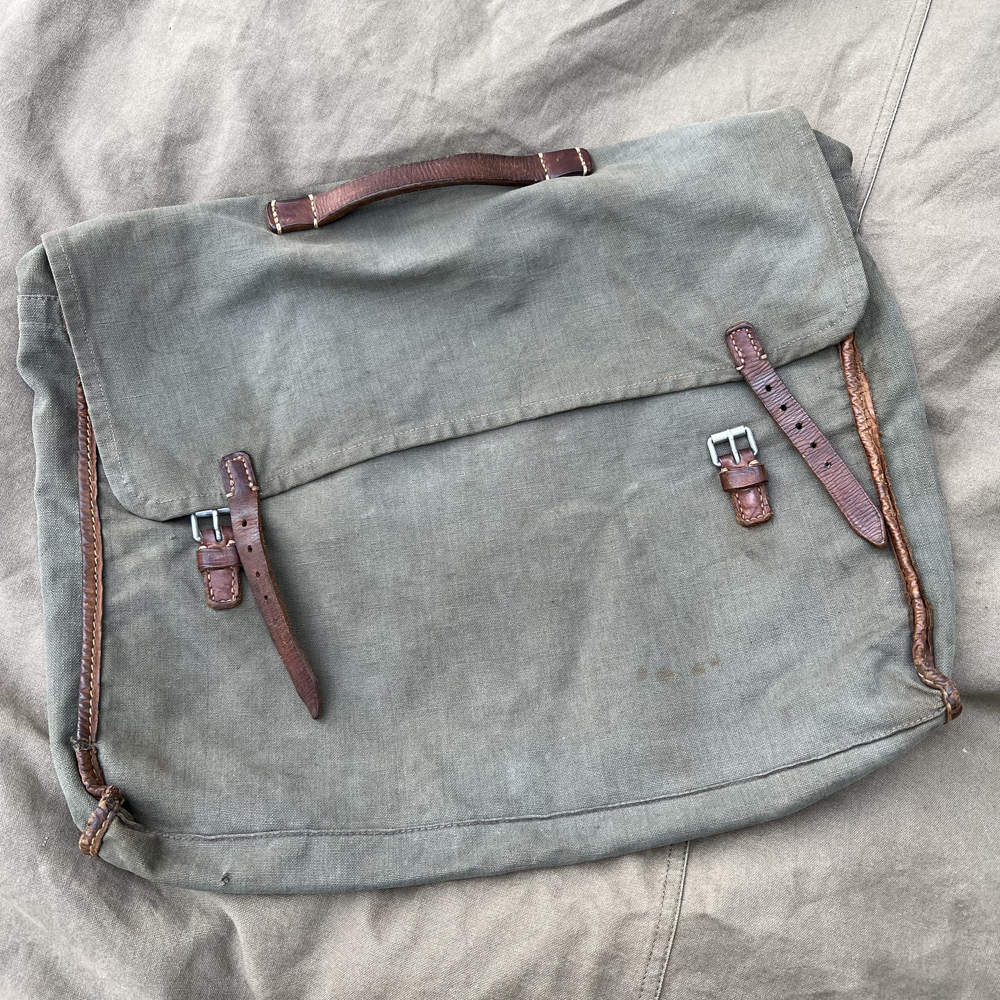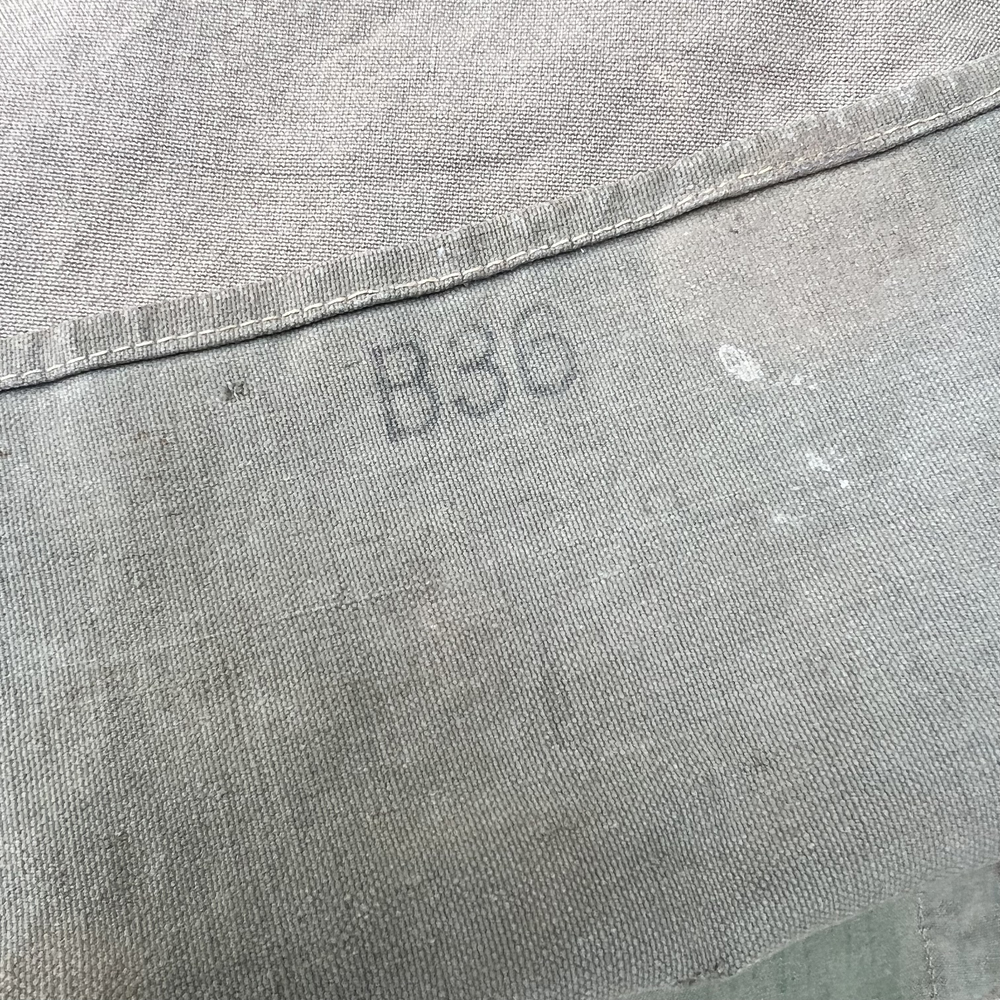The simple bag known to militaria collectors as the “Bekleidungssack 31,” and listed in Wehrmacht-era German Army documents simply as a “Bekleidungssack” (Clothing bag), was part of the equipment issued to German Army soldiers to store and transport their gear, along with the bread bag and Tornister or Rucksack. These were used to hold clothing that was not being worn, such as extra underwear, the issue work uniform, sweaters, or any other clothing not presently needed. These were purportedly introduced in 1931, and certainly were in use from the prewar period through the end of the war- and indeed, many of these practical bags continued to be used by POWs and later by civilians, for decades after the war; no doubt some are still in use even in our present time. As is typical with Wehrmacht field gear items, these underwent a number of changes and evolved over time.
Looking at issue records in original Soldbuch ID documents, it is common to see one Bekleidungssack issued. Some soldiers got two, while others never were issued any.

Here is a selection of original German Army clothing bags that date from the 1930s through the end of WWII. You will note a range of materials, colors and color shades.

This is a textbook early bag. It features sturdy gray canvas, brown leather, and aluminum buckles.

Here is another early one. This one is made of green canvas and has many repairs.

The “B36” under the flap indicates acceptance at the Berlin depot in 1936.

When I got this bag it had a handful of old straw inside. It likely was still used after WWII and the repairs could be postwar repairs done with surplus material, which was often all that was available in the difficult time right after the end of the war. A section of Zeltbahn shelter quarter was used, that still bears the maker marking and 1935 date from the Zeltbahn that donated the fabric for the repair.

This early clothing bag went through the military mail system as a parcel. The front is addressed to an officer’s home address. It’s marked “Feldpost” for military mail.

The other side of the bag retains the original paper mailing label with typed address as well as the Feldpost number stamp of the sending unit, acting as a postmark. This bag has many neatly done repairs, both hand darned and machine sewn. It can be impossible to say when repairs were done, but the fact that this fragile paper label has survived suggests that this bag wasn’t used much after being mailed; the repairs are likely wartime done.

These bags have the leather reinforcement like prewar bags but these are from the early wartime period. The leather is black, and the roller buckles are steel, rather than aluminum.

Later on, the leather reinforcement was omitted. These are later war bags. The bag on the left below has a black painted steel buckle. The bag on the right has an even later buckle- steel, with no roller, and apparently galvanized.

The bag on the right above is marked inside with an illegible stamp that appears to have been a RB number maker code. The thick cotton canvas of the prewar period has been replaced here with a thin and coarsely woven fabric, perhaps linen or hemp, or a blend.

Here is another later bag. The closure straps and carrying handle here are made of parts of internal suspenders, a component of the German Army field blouse until 1942. The appearance of integral supports in the field blouse in 1942 and later made these internal suspenders obsolete, and surplus inventory was recycled by the Germans in a variety of ways.

This wartime bag is made of blue fabric. This writer has found no evidence for Luftwaffe use of this clothing bag style. The color may indicate use by the Polizei, or by another organization, or perhaps this is simply a German Army bag made of blue canvas.

This bag was modified, presumably after the war, by affixing a pair of shoulder straps taken from a Tornister pack to turn it into a small backpack, likely for a child. It’s an interesting example showing how things were modified and used in the difficult shortages of the postwar years, when production of civilian goods had been curtailed for years, and new goods may not have been available.
